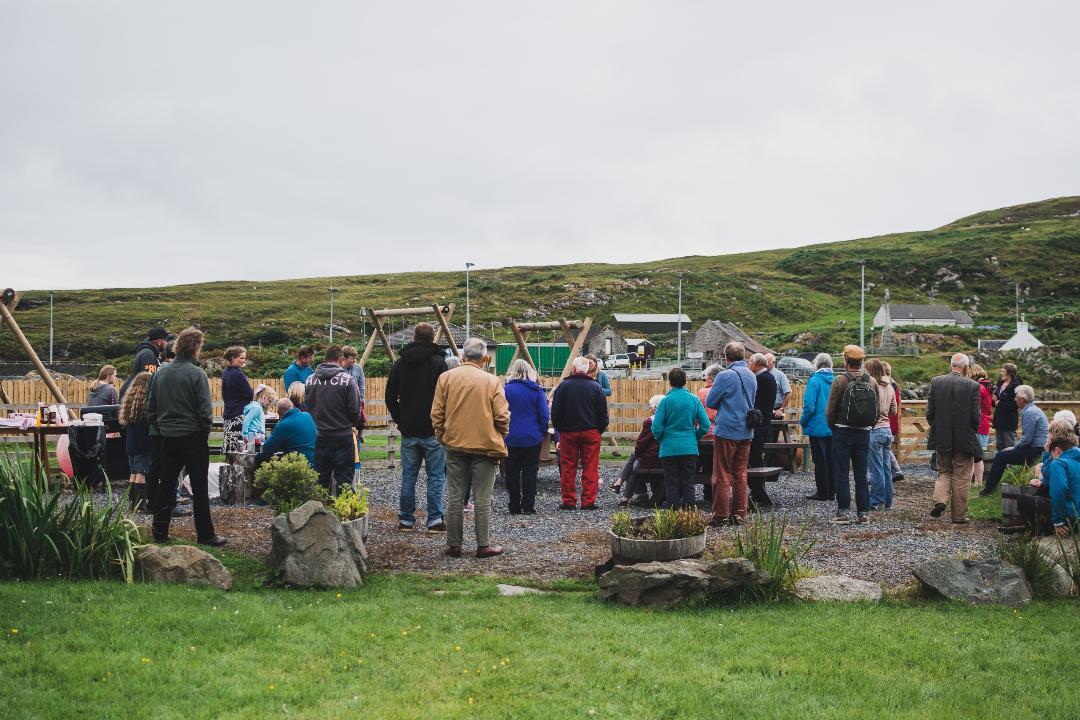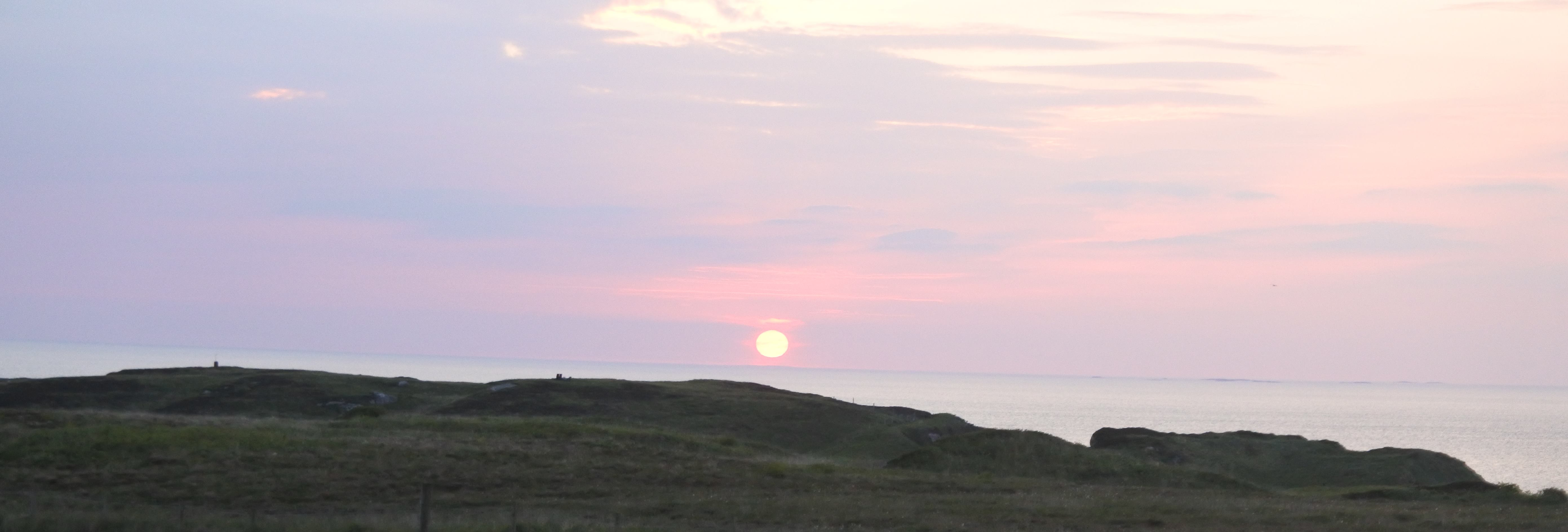
WILD ISLAND. A year in the Hebrides” by Jane Smith.
Have you ever listened to Corncrakes calling on a star-lit night? Have you crossed the Strand to Oronsay, wading through the reflection of the huge Hebridean sky? Did you know that cuttlefish fly through the water here like winged pink elephants? And have you seen the swooping flight of red-billed choughs as they play in the sea breeze?
If you have, this new book “Wild Island” will remind you of all the reasons that you love Colonsay and Oronsay. If these experiences are yet to come your way, discover them in the company of the wildlife artist Jane Smith, who spent the last four years travelling to the islands to draw and paint there. Her book is full of humorous accounts of island life, and is illustrated with her colourful paintings and prints.
Jane was lucky enough to stay on Oronsay with the RSPB, as she learned how they farm the island to encourage traditional Hebridean wildlife, using old techniques and new machinery. She visited the cliffs at Pig’s Paradise to paint the spectacle of many thousands of nesting seabirds. And she became very familiar with the CalMac cafeteria menu.
This book is now available from all good book sellers, including those on Colonsay. At £20 it makes an ideal gift for anyone who loves this place.
Extract from Wild Island.
“I cross from Colonsay to Oronsay at night under a half moon, and the still air is full of corncrakes craking. The calls are insistent, rhythmic and loud, all slightly out of sync with each other, so the rhythm of one gradually overtakes its neighbour. When another deeper, more determined voice starts up even closer, merging into the head-filling buzzing, I can’t help laughing at the madness of it all. Corncrakes seem to call near walls and buildings so the vibrating bass is amplified and bounces off the stone. No wonder the people who farmed here one hundred years ago considered them pests. Flora spoke of her mother chasing after them in her nightgown when she couldn’t get to sleep.
I hope to draw the corncrakes, and I settle down in the early morning sun at the field edge. The early cover of nettles and cow parsley is now well grown and other species are benefiting from it too. A whitethroat is singing energetically and hunting for insects amongst the nettles. Sparrows are peeling strips from last year’s dried plant stems to thread into their nests. Swallows are collecting mud from the tractor ruts in the road. Some bring dry grass in their beaks and use the mud as cement.
I think the crakes must be sleeping after their busy, buzzy night. There’s no sound from them. I go in for coffee and Mike tells me of one night when he saw strange clouds shimmering over the corncrake fields. Closer inspection revealed thousands of ermine moths dancing in the moonlight. “It was just magical,” he says, “and just think how many insects those fields are growing. All good corncrake food.”
Val tells me the best time to see corncrakes is after rain or dew, when they come out of the damp undergrowth to dry off in the sun. It’s a day of sunshine and showers so I persist in my quest. I settle on the verge again and start to paint nettles and plantain. After half an hour there is a flash of orange and a bird like a small chicken emerges from the undergrowth. It crouches, low and circumspect, crosses the track on long strides, and disappears into the vegetation again.”
Jane will be giving a talk at the Spring Festival. See the Spring Festival website for more details.
You May Also Like...
Recent Posts

The Front Page – July 2018
Though the not-quite-a-drought time eventually ended, summer did not part, as it might have done,...

The Front Page – June 2018
The warm dry spell that spread across the whole country in late spring and extended...

The Front Page – May 2018
Spring came late this year, but by May calving and lambing were well underway on...


